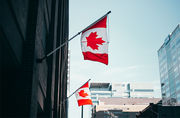In late August, Manulife Financial made cuts to half its term product rates. Paul Smith, Vice President Marketing and Product Development, Individual Life, says this move is aimed at capturing more market share in a highly competitive environment where major insurers are jockeying for position.
The rate adjustments apply to the company’s main term product line, Family Term and Business Term. These base products also underlie term riders on other products, explains Mr. Smith. "So where our universal life product has a term rider on it, it’ll get the same rates."
When the insurer says it has lowered half of its rates, it means the rates it offers for every age, both sexes and its five health style classes. "With all the permutations and combinations, you’ve got thousands and thousands of rates." Manulife has made cuts to half those rates, but it also maintained about 35% of rates as is. It also raised 15% of its term rates.
Mr. Smith says that pretty much all the major insurers have adjusted their term insurance rates over the last year.
Before this repricing, the last time that Manulife adjusted its rates was just over a year ago. Since then, its competitors have repriced at least once and some have even done so twice, he added. "It’s a very competitive market."
A year ago, after it repriced its term products, Manulife was where it wanted to be – in the top five of its peer group of eight major insurers. But with all the repricing activity since then, the insurer had last some ground, Mr. Smith explains.
"We’re just starting to see that we weren’t growing as fast as the market. We’re ahead of last year, but we thought…there’s more room here…and we could probably recapture…[market] share with the flight to quality."
Manulife’s repricing strategy also takes into account the relative competitive position of its products in LifeGuide comparison surveys. The LifeGuide Professional Software, is produced and distributed by CompuOffice Software Inc. It provides comparative pricing quotations, along with other research and product suitability assessment features. It is widely used by thousands of insurance and financial advisors.
The goal is always to show up on the first page of LifeGuide when an advisor does a quote, explains Mr. Smith. "If they don’t see your company they’re not going to go a step further."
Another key objective was to tighten the pricing gap between Manulife and its lowest priced competitors. The goal is to make sure that it is close enough to the top one or two companies that an advisor can tell a client: "Well that’s only a couple of dollars, over a year, or that’s just 50 cents a month, and that is something we can live with for this case."
Manulife’s recent rating adjustments were focused on its target market: the 40-55 year age group and higher face amounts of $500,000 and above. Some of the lower face amounts, under $250,000, generally stayed the same. Meanwhile, rates for ages 30 and under is where the company increased some rates for profitability reasons, Mr. Smith added.
Before its repricing last August, did Manulife believe its term price ranking was slipping? "Yes, we felt we’d gone down too far. In places in this target market where we wanted to be really competitive – between ages 40 to 55 – there were times when we were 10th, 11th , 12th. That’s starting to get you to the bottom of the page of LifeGuide and you don’t want to disappear out of there."
Does Mr. Smith qualify the competitive repricing going on among insurers as a price war? He says he does not because term cuts are an ongoing trend. "There’s some good reasons for it…People are living longer and you see the impact of that in term insurance in particular. So, companies are getting better rates from their reinsurers, they’re viewing the business as more profitable. They can either put that in their pocket, or they can try and sell more by reducing their rates..." (See: Is it a price war? p.27)
Mr. Smith underlines, however, that it is certainly a highly competitive market place. "Companies who are in the top five market share, we’ve always been within percentage points of each other, probably three to five at the most. It’s kind of jockeying for position."
How deeply Manulife cut rates depended on where it ranked in a particular cell, ie., 40 year old, male non-smoker. "We might be able to be number one or two or three and only lower our rate two per cent, other places we might have to go seven. On average, he estimates the rate cuts were between 3% and 5%.
Current market conditions are affecting term market pricing, Mr. Smith adds. Advisors are dealing with clients who may not feel it’s the right time to purchase more costly permanent products. So, they are selling more term to get the coverage in place with the idea of converting to a permanent product when the client is ready.
Mr. Smith cites second quarter sales results from LIMRA International that indicate that while the total insurance market was down 6% in Canada, the term market was up 4%. "So you can see where [insurers] say, ‘That’s a good place to make sure I’m competitive, because that’s where the sales are coming from.’"
And many of these term sales will eventually convert into permanent sales down the road, he adds. Mr. Smith estimates that 20% of Manulife’s universal life sales come from conversions from term.
"With this phenomenon of people buying term insurance with the idea of converting in the future, we think we have one of the best conversion programs. Not everyone has the products that you can convert to that we have, or the terms that we allow people to convert on."







